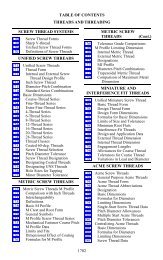'Focus' (Jiaodian Fangtan) and the Changes in the Chinese ...
'Focus' (Jiaodian Fangtan) and the Changes in the Chinese ...
'Focus' (Jiaodian Fangtan) and the Changes in the Chinese ...
Create successful ePaper yourself
Turn your PDF publications into a flip-book with our unique Google optimized e-Paper software.
LI XIAOPING<br />
Battle for rat<strong>in</strong>gs 3<br />
Fac<strong>in</strong>g <strong>the</strong> same battle for advertis<strong>in</strong>g revenue, competition among <strong>the</strong> media takes<br />
place at various levels. There is competition among TV, radio <strong>and</strong> pr<strong>in</strong>ted media,<br />
competition between TV stations, channels <strong>and</strong> programs. Journalists compete for<br />
exclusive news sources, <strong>and</strong> for prime time slots for <strong>the</strong>ir own programs by<br />
improv<strong>in</strong>g <strong>the</strong>ir product. In many ways, this k<strong>in</strong>d of competition is similar to that<br />
<strong>in</strong> capitalist societies.<br />
Many local TV stations have also been able to compete for audiences with <strong>the</strong><br />
national network by transmitt<strong>in</strong>g <strong>the</strong>ir broadcasts via satellite or cable network to<br />
big cities. Audiences have bene� ted from more choices. In order to ga<strong>in</strong> an edge<br />
over competitors, TV stations have to constantly review <strong>the</strong>ir strategy <strong>and</strong> programs<br />
while strik<strong>in</strong>g a balance between professional st<strong>and</strong>ards <strong>and</strong> high-quality programs.<br />
Consequently, while audience rat<strong>in</strong>gs were never especially important <strong>in</strong> <strong>the</strong> past,<br />
<strong>the</strong>y have become a dom<strong>in</strong>at<strong>in</strong>g factor <strong>in</strong> TV programs. CCTV regularly reviews<br />
<strong>the</strong> rat<strong>in</strong>gs for each channel <strong>and</strong> program. If any program transmitted <strong>in</strong> prime time<br />
fails to reach certa<strong>in</strong> levels of rat<strong>in</strong>gs, it will be removed from prime time <strong>and</strong><br />
rescheduled to a time slot described as ‘graveyard’. This refers to late even<strong>in</strong>g or<br />
after-midnight, or dur<strong>in</strong>g <strong>the</strong> daytime. For example, <strong>the</strong> program ‘Tell It Like It Is’<br />
(Shi Hua Shi Shuo) (‘Speak<strong>in</strong>g <strong>the</strong> Truth’) was removed from a Sunday morn<strong>in</strong>g<br />
time slot to Sunday even<strong>in</strong>g after it showed an audience rat<strong>in</strong>g of 4.2% at <strong>the</strong><br />
beg<strong>in</strong>n<strong>in</strong>g of December 2000.<br />
The competition for rat<strong>in</strong>gs does not mean <strong>the</strong> end of government supervision,<br />
however. TV stations must also satisfy <strong>the</strong> dem<strong>and</strong>s of government <strong>and</strong> political<br />
directives; <strong>the</strong> media have, <strong>in</strong> practice, to steer a middle course between <strong>the</strong><br />
pressure from economic competition <strong>and</strong> political directives. This is <strong>the</strong> only way<br />
to survive <strong>in</strong> a society which is both economically competitive <strong>and</strong> politically<br />
directed.<br />
News output<br />
The boom<strong>in</strong>g market economy has forced TV stations to recognize <strong>the</strong> importance<br />
of serv<strong>in</strong>g <strong>the</strong> people <strong>and</strong> provid<strong>in</strong>g <strong>in</strong>formation that <strong>the</strong>y need <strong>and</strong> are <strong>in</strong>terested<br />
to know. This expla<strong>in</strong>s <strong>the</strong> � ourish<strong>in</strong>g number of programs that provide social <strong>and</strong><br />
economic <strong>in</strong>formation such as share prices, traf� c news, wea<strong>the</strong>r forecasts <strong>and</strong> farm<br />
produce prices.<br />
Break<strong>in</strong>g news such as natural disasters <strong>and</strong> crises such as war <strong>and</strong> con� ict have<br />
ga<strong>in</strong>ed more coverage as <strong>the</strong>y are items of <strong>in</strong>terest for most TV viewers. TV<br />
journalists have become more aggressive <strong>in</strong> report<strong>in</strong>g those stories. CCTV has<br />
given a high percentage of coverage to live break<strong>in</strong>g news, <strong>in</strong>vestigative report<strong>in</strong>g<br />
<strong>and</strong> major issues <strong>and</strong> crises <strong>in</strong>clud<strong>in</strong>g <strong>the</strong> launch of satellites <strong>and</strong> <strong>the</strong> ground<br />
break<strong>in</strong>g of <strong>the</strong> Three Gorges Dam Project; � oods <strong>and</strong> earthquakes <strong>and</strong> <strong>the</strong> nuclear<br />
3. Ch<strong>in</strong>a’s primary source of television rat<strong>in</strong>gs data are CVSC-SOFRES MEDIA (CSM) <strong>and</strong> AC Nielsen.<br />
CVSC-SOFRES MEDIA (CSM) provides rat<strong>in</strong>g data every day of <strong>the</strong> year for about 700 channels <strong>in</strong> 12 prov<strong>in</strong>ces<br />
<strong>and</strong> some 70 cities throughout Ch<strong>in</strong>a. The rat<strong>in</strong>gs are obta<strong>in</strong>ed from a representative sample of 22,000 households,<br />
us<strong>in</strong>g diary <strong>and</strong> people-meter methods. AC Nielsen provides data for some sou<strong>the</strong>rn east cities <strong>in</strong> Ch<strong>in</strong>a.<br />
20




